Marine Biologists Find Unidentified Translucent Species in the Deep Sea
An international team of marine biologists has identified a new deep-sea isopod species named Booralana nickorumn.
Spearheaded by Dr. Oliver Shipley from the School of Marine and Atmospheric Sciences (SoMAS) at Stony Brook University, this remarkable discovery took place during an exploration of the Exuma Sound off the coast of the Bahamas. Published in the journal Zootaxa, their findings shed light on the fascinating characteristics of this crustacean, offering valuable insights into the secrets of the ocean’s depths.
What Are Deep-Sea Isopods?
The deep-sea isopod, a member of the crustacean family, thrives in the profound depths of the ocean. Functioning as scavengers, they sustain themselves by consuming the remains of deceased animals that descend to the ocean floor.
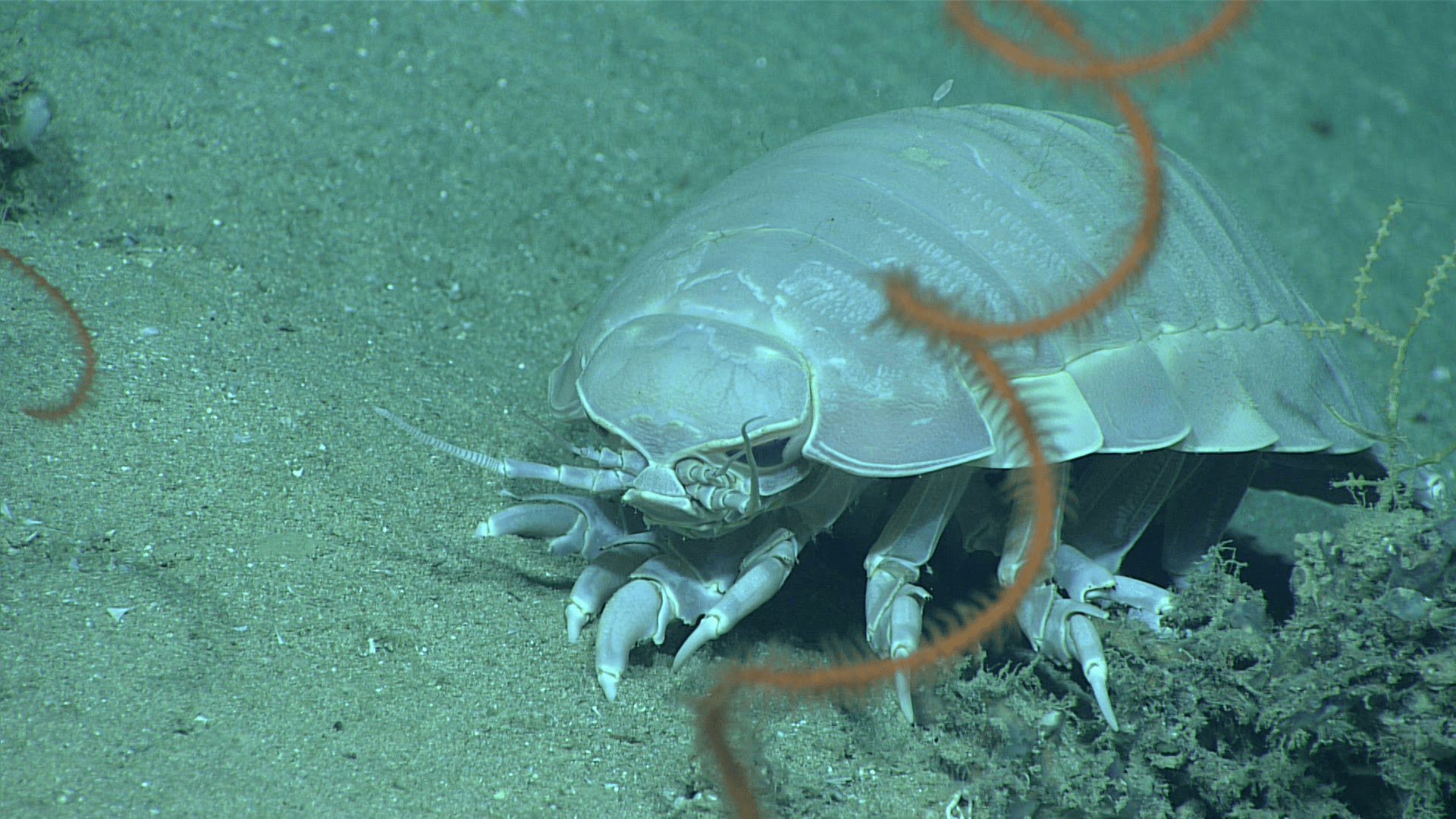
NOAA/Wikimedia Commons
Remarkably, these isopods can attain lengths of up to two feet, securing their position as one of the most sizable crustaceans and the largest recognized member within the isopod family. This considerable size could be an evolutionary adaptation to cope with the intense pressure characteristic of the deep-sea environment.
What is the Exuma Sound?
The Exuma Sound is a distinct body of water characterized by its strategic location southeast of New Providence Island and Eleuthera Island, and west of Cat Island in the Bahama Islands.
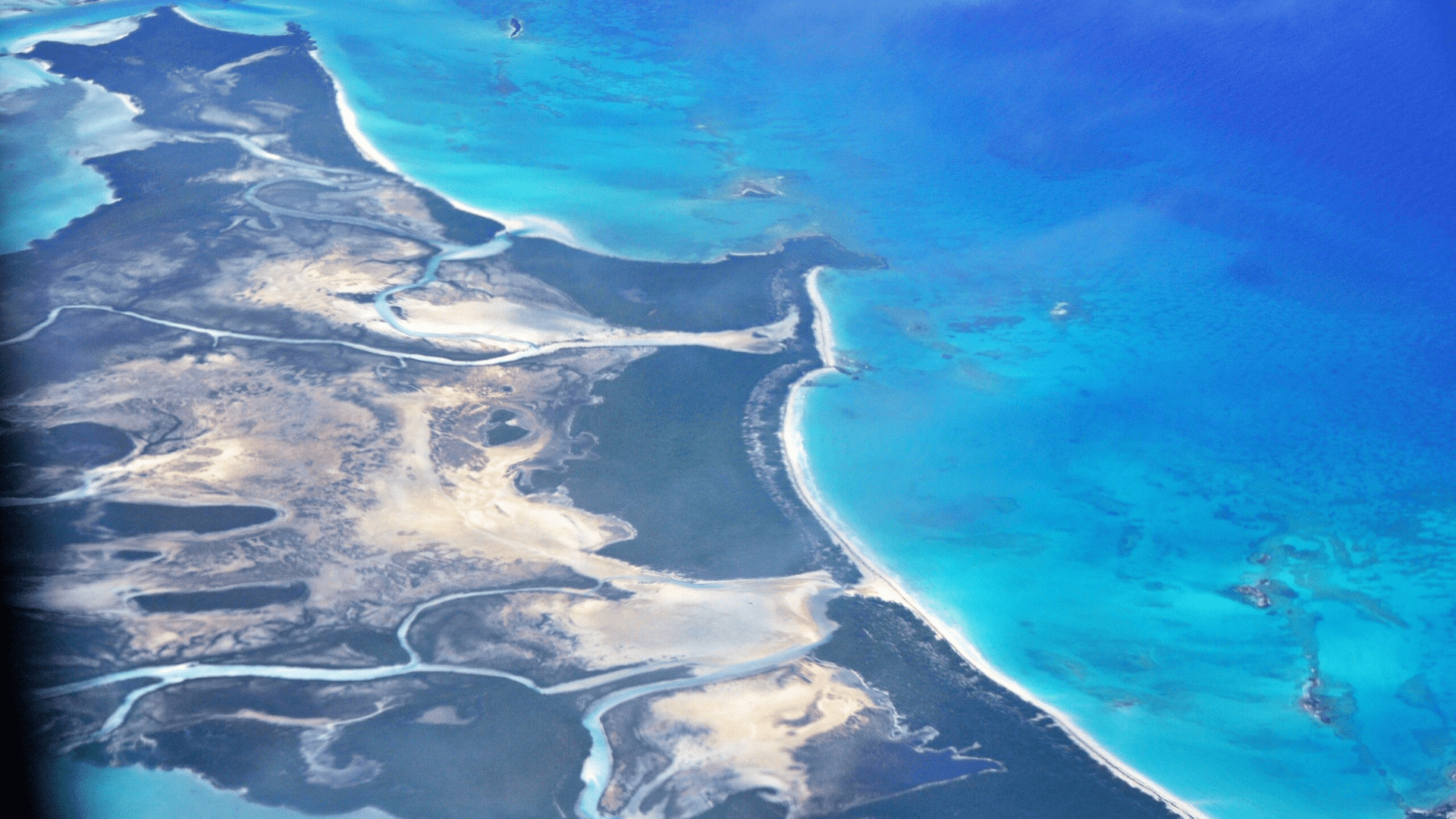
James St. John/Wikimedia Commons
Renowned for its enigmatic depths, this region has undergone thorough exploration facilitated by cutting-edge underwater technology. Utilizing manned submersibles, scientists have descended to remarkable depths of 800 meters (2,624 feet) to observe, analyze, and sample the diverse array of creatures and terrain that inhabit the darkness of the Exuma Sound.
Booralana nickorum Thrives in Extreme Conditions
Booralana nickorum, a member of the Booralana genus, has roamed Earth for an astonishing 300 million years.
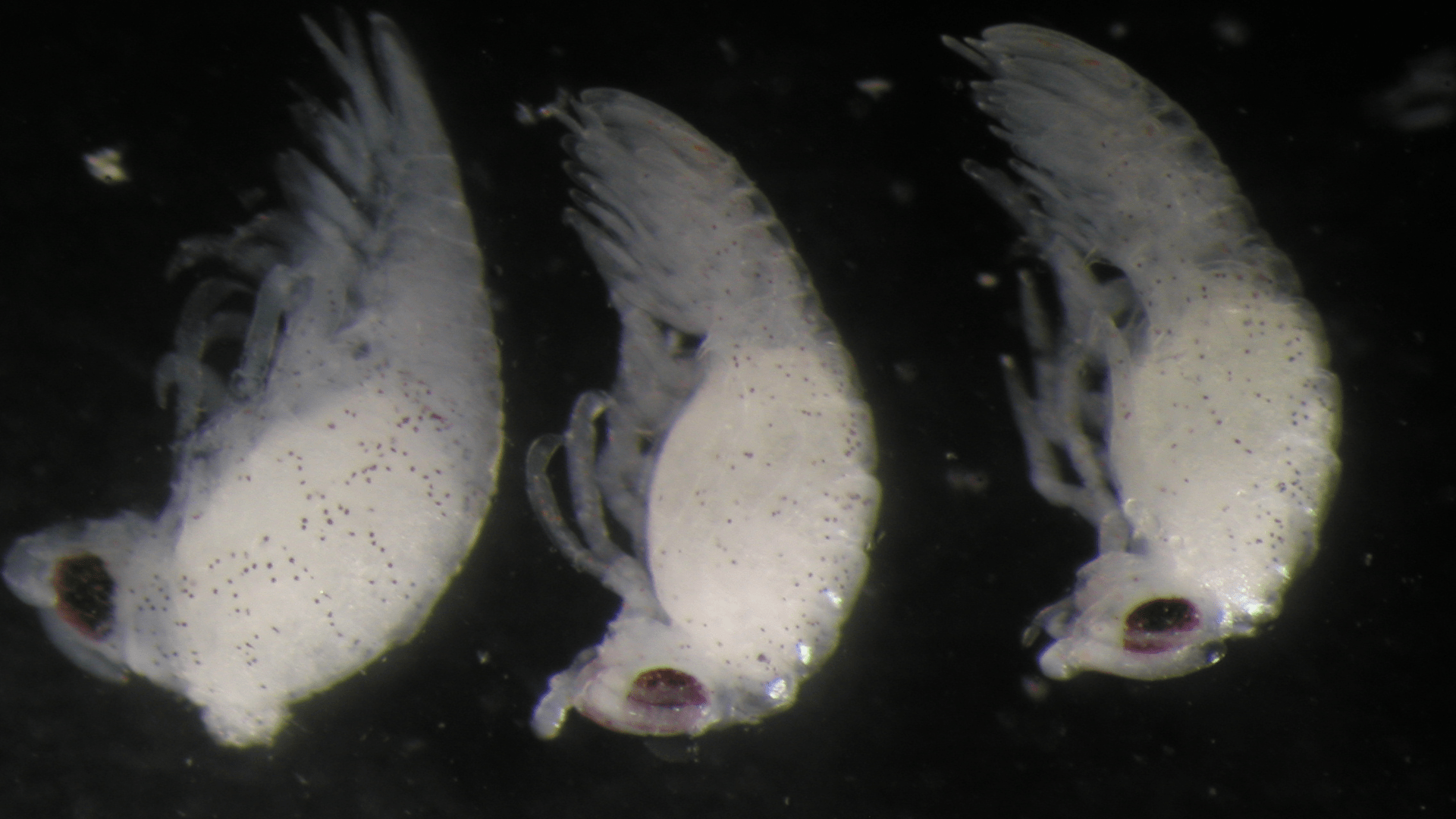
AquaTT/Wikimedia Commons
Discovered at a depth of 1,800 feet, this deep-sea isopod boasts a distinctive translucent body and remarkable giant eyes, exemplifying its ability to thrive in the challenging conditions of the Exuma Sound’s cold and dark waters.
How Long Have Isopods Been on Earth?
Isopods boast an extensive presence on Earth, spanning at least the 300 million years previously noted.
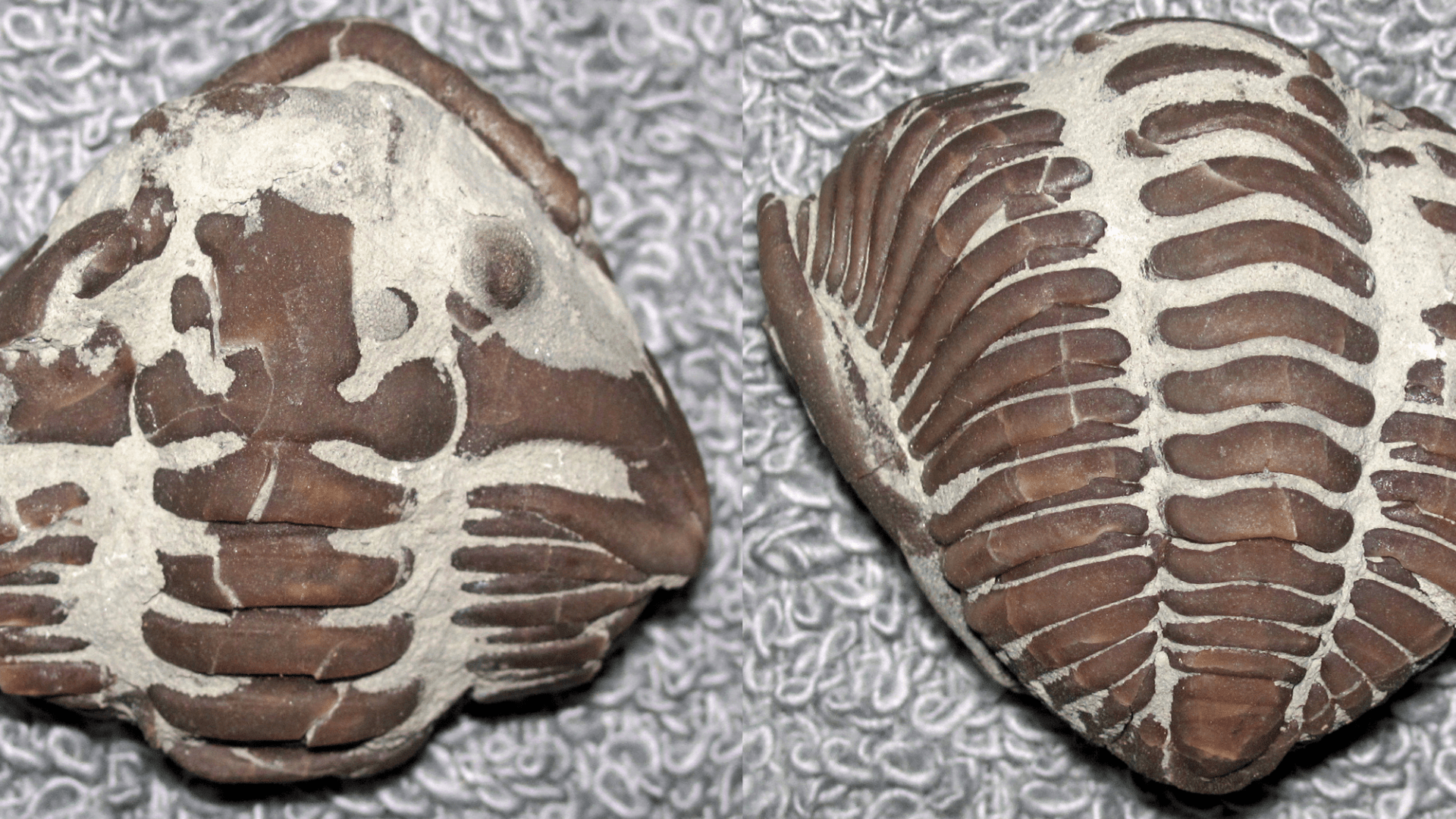
James St. John/Wikimedia Commons
The fossil evidence of isopods traces back to the Carboniferous period, a minimum of 300 million years ago, during which these creatures thrived in shallow seas. During this epoch, isopods manifested as primitive, short-tailed members within the Phreatoicidea suborder.
Booralana nickorum’s Unique Features
The creature’s transparent exoskeleton, coupled with its large compound eyes, plays a pivotal role in its survival strategy.
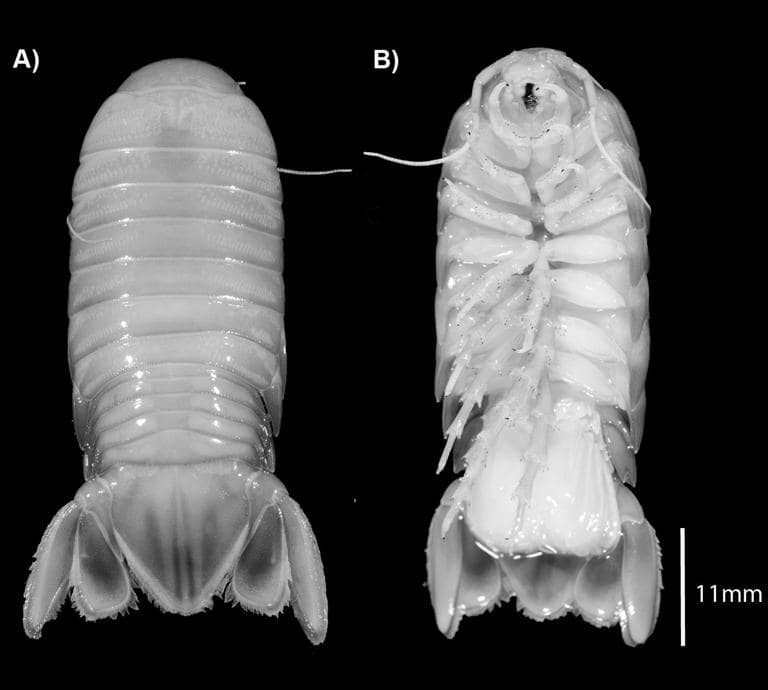
School of Marine and Atmospheric Sciences/Facebook
Unlike their shallower counterparts, Booralana nickorum, dwelling beyond 500 meters, doesn’t require pigmentation, resulting in its unique white and slightly translucent appearance.
Scientists Used Innovative Techniques in Research
To aid their research of Booralana nickorum, scientists employed innovative techniques, including LED lights and glow sticks, providing a comprehensive understanding of its features. One of the most interesting techniques used was baited eel traps equipped with specialized lights.
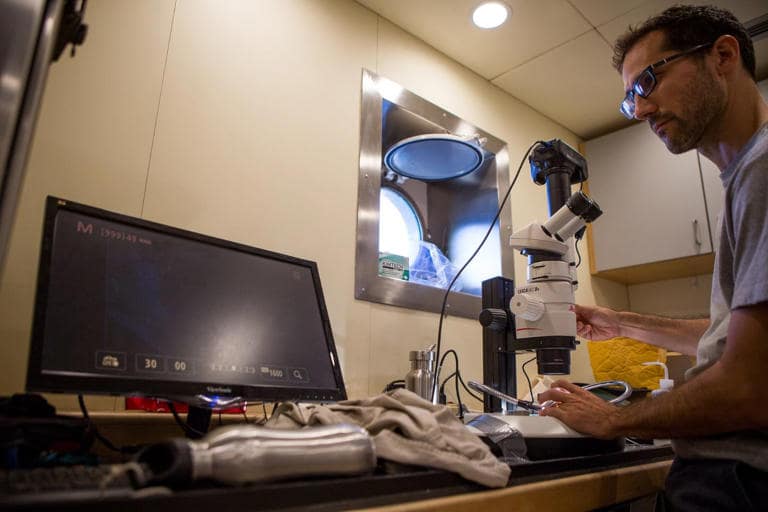
Source: BREEF/Facebook
Nicholas Higgs, co-author of the study and Director of Research and Innovation at the Cape Eleuthera Institute, notes, “You can see its guts and things,” highlighting the creature’s extraordinary physical traits.
Do Deep-Sea Isopods Help the Ecosystem?
Isopods, such as Booralana nickorum, play a crucial role in the deep-sea ecosystem by accelerating the decomposition of plant or animal material.
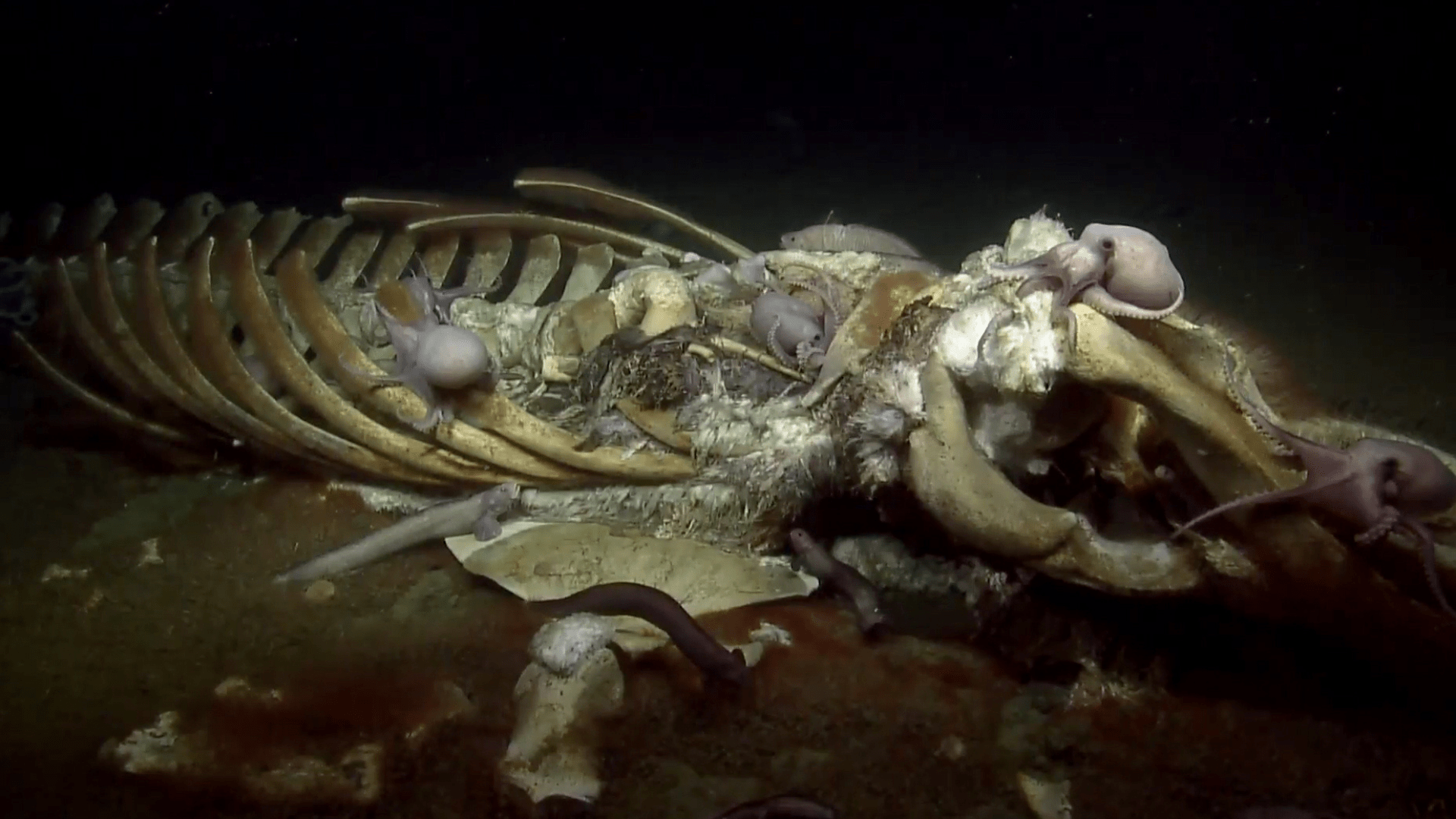
National Marine Sanctuaries/Wikimedia Commons
This process facilitates the utilization of energy sources by the broader ecosystem. Intriguingly, certain isopods within the Booralana genus have been linked to predation on living vertebrates, including sharks, contributing to the delicate balance of deep-sea ecosystems.
Booralana nickorum’s Size
Measuring between 2.2 to 3 inches (55 to 76 millimeters), Booralana nickorum holds a substantial size advantage over its terrestrial counterparts.
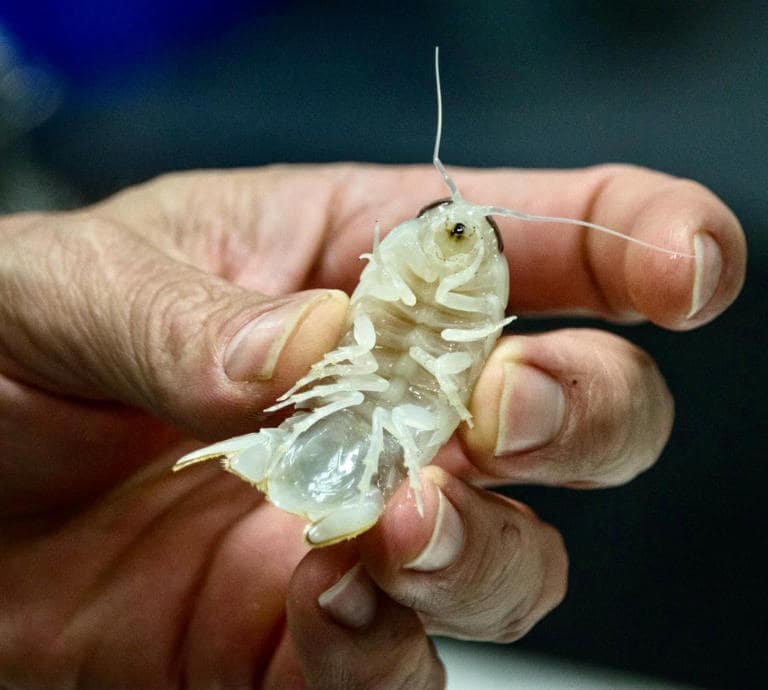
School of Marine and Atmospheric Sciences/Facebook
This size enables the deep-sea scavenger to patiently wait on the seabed for food to descend from above, a critical adaptation in an environment where sustenance is scarce.
Differences Between Terrestrial and Deep-Sea Isopods
Terrestrial isopods, commonly known as woodlice, are found in land environments, often under rocks, logs, or in damp areas like gardens. With a flattened, segmented exoskeleton, they typically measure 5 millimeters to 2 centimeters in length.
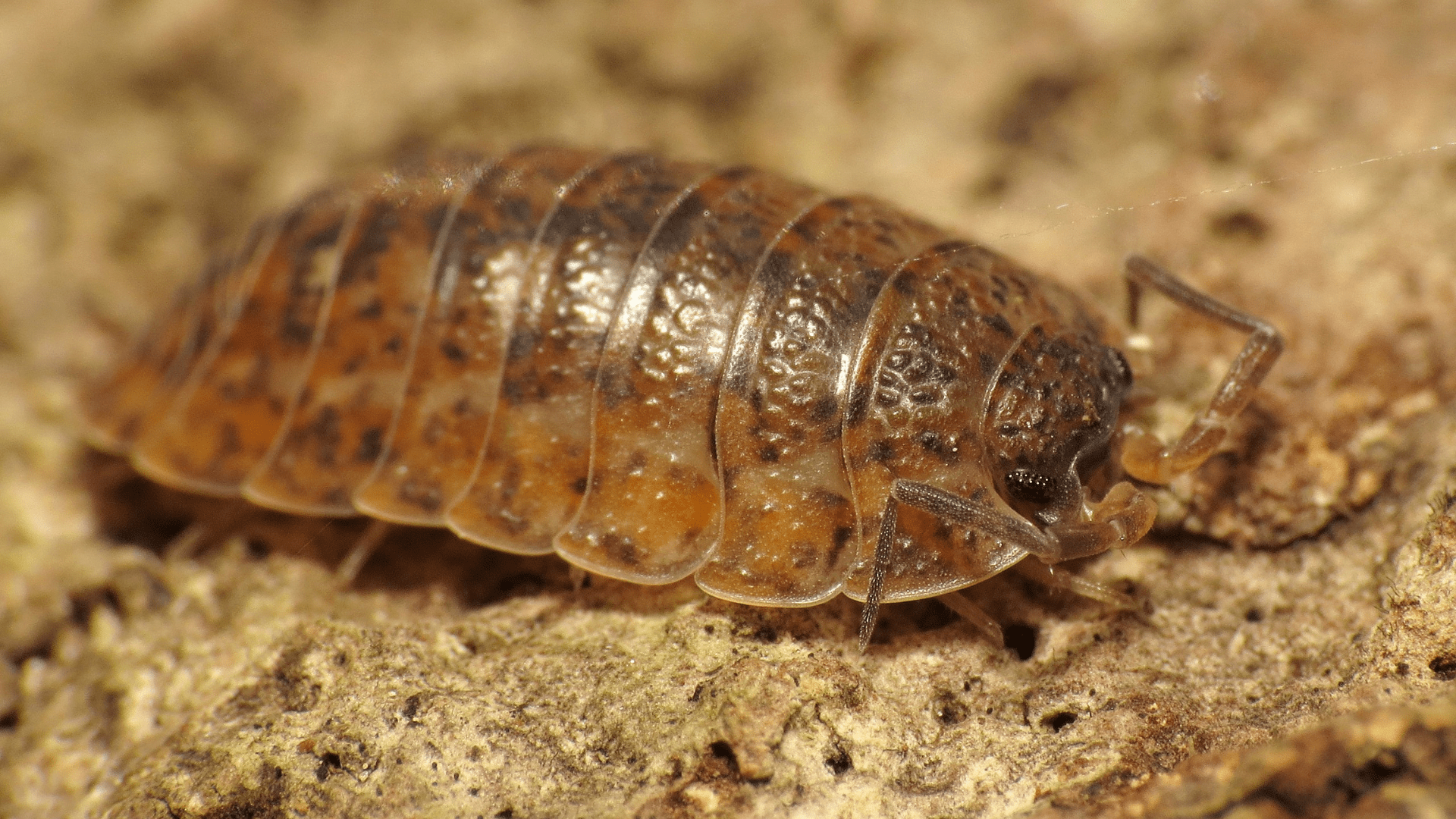
Katja Schulz/Wikimedia Commons
In contrast, deep-sea isopods display deep-sea gigantism, a phenomenon where regular isopods, usually around 5 centimeters (2 inches) long, are dwarfed by giant deep-sea isopods like the Bathynomus spp., which can grow up to 16 inches (40 centimeters) in length.
How Deep-Sea Isopods Feed
Since resources are scarce in the deep sea, isopods have adapted to rely on food descending from the upper layers of the ocean. This descending debris is referred to as “marine snow,” and is often composed of crab flesh, marine worms, plankton, and so forth.
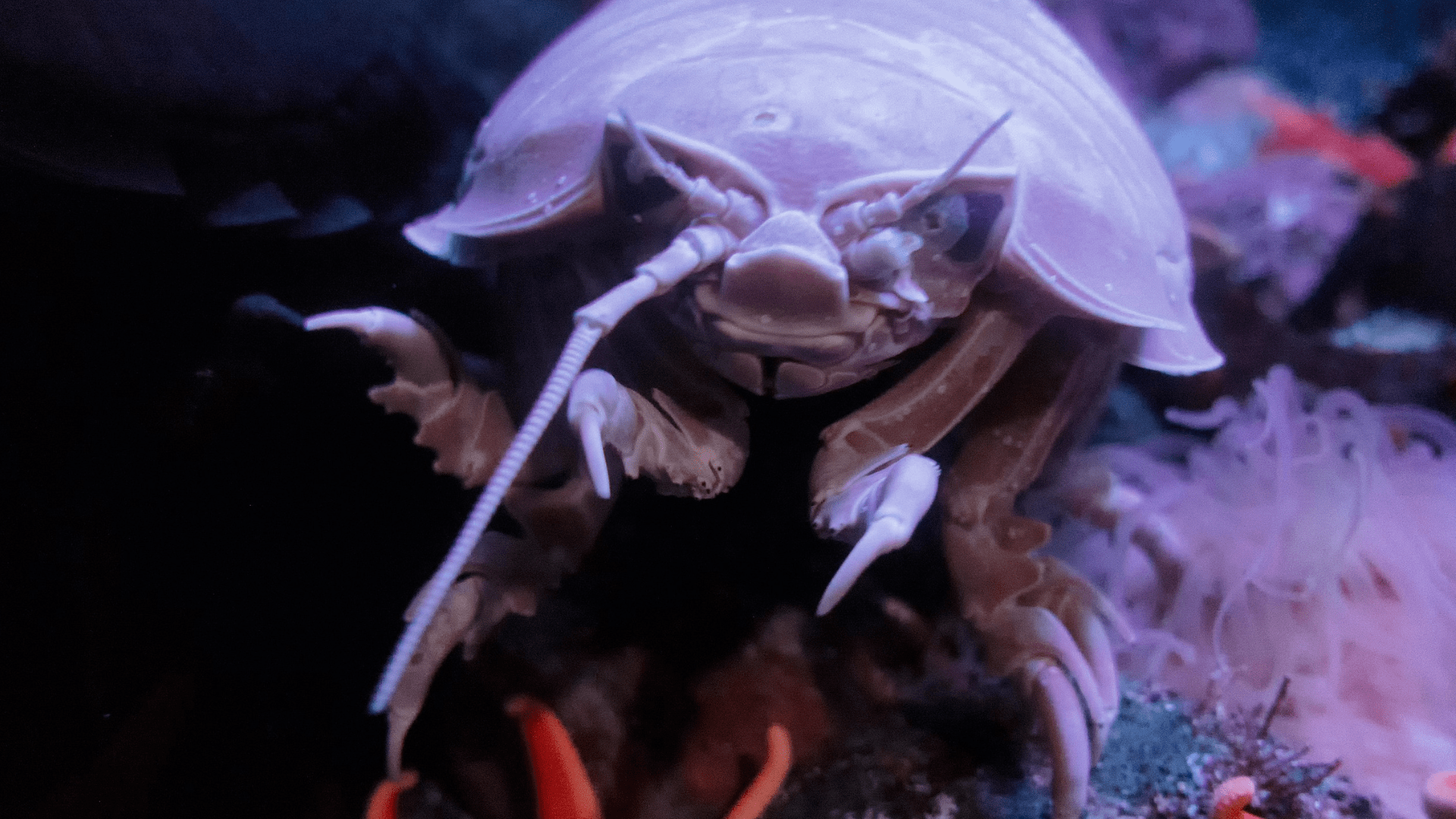
Eric Kilby/Wikimedia Commons
Periodically, substantial food supplies, such as whale fall, contribute to the nutrient pool on the seabed. The term “whale fall” refers to the phenomenon of deceased whales sinking to the ocean floor, serving as a source of sustenance and nutrients for deep-sea organisms.
The Undiscovered Deep
The groundbreaking discovery of Booralana nickorum unfolded during two expeditions in April 2014 and February 2019, led by OceanX and the Cape Eleuthera Institute.
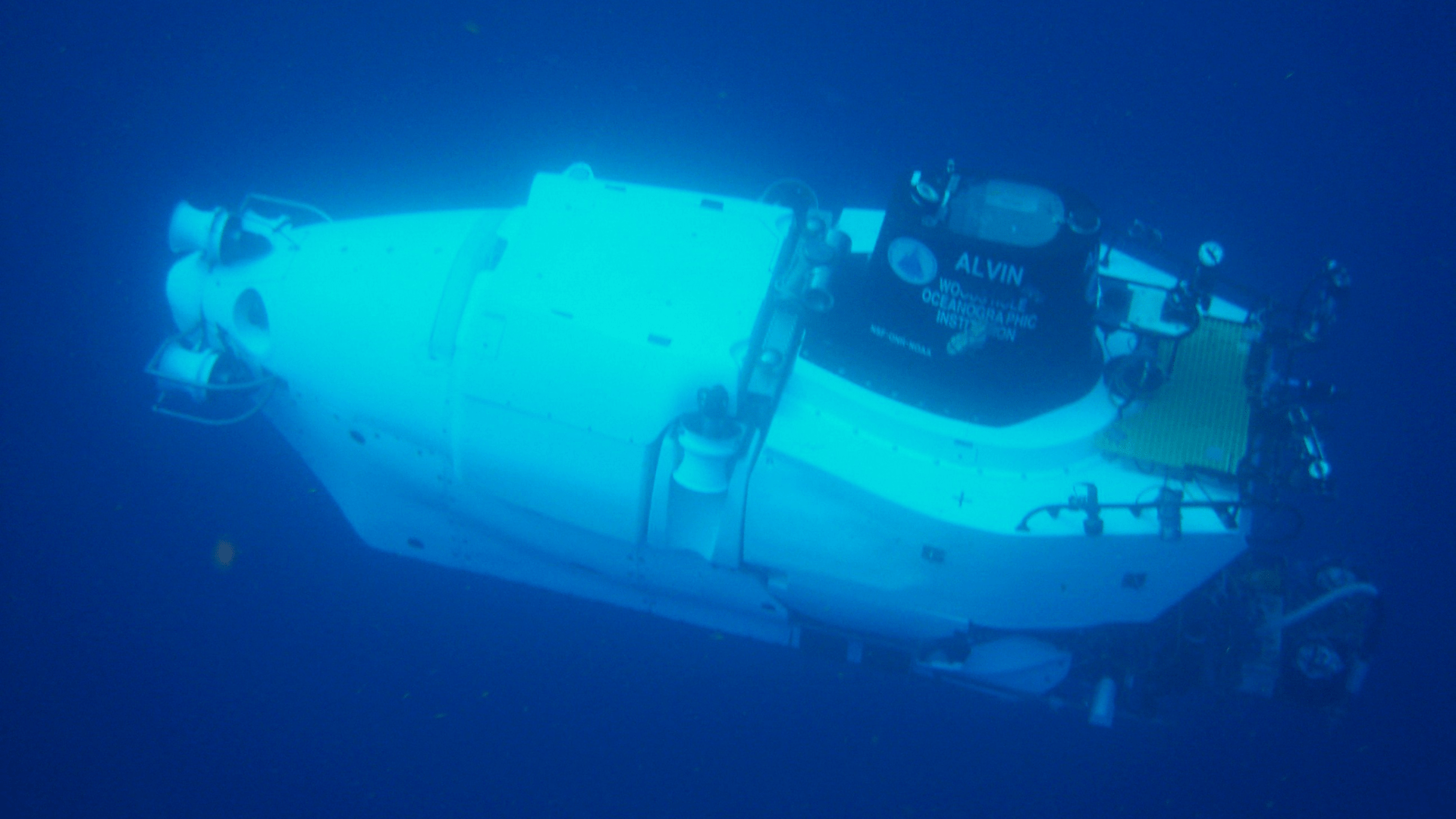
Gavin Eppard/Wikimedia Commons
Employing diverse lighting methods, scientists successfully captured and studied the elusive isopod in its natural habitat. As marine biologists continue to plumb the ocean’s depths, it is anticipated that more revelations about undiscovered species and their ecological roles will come to light.
